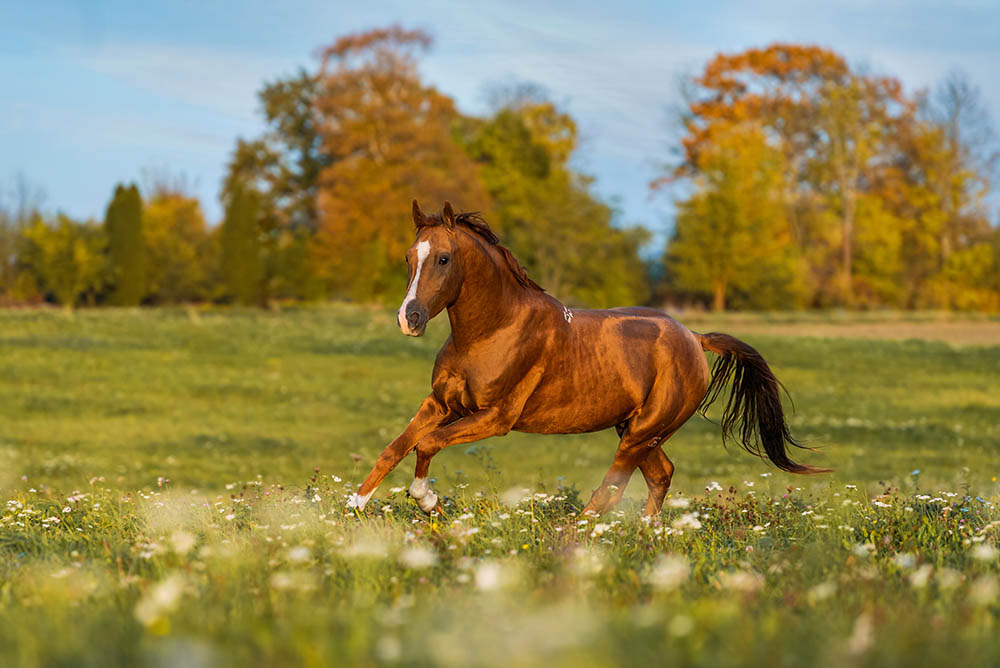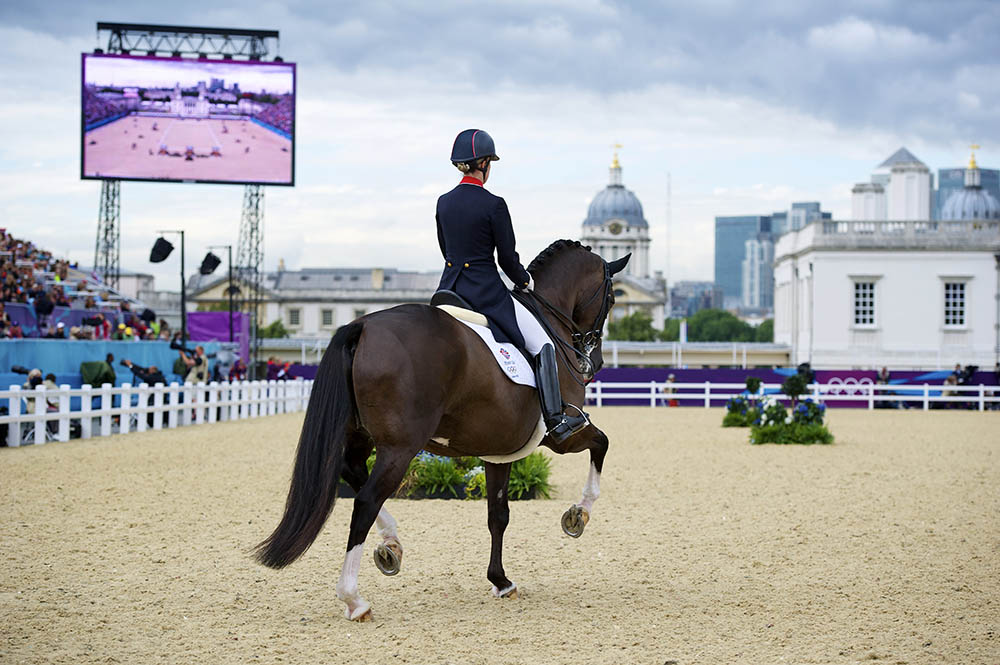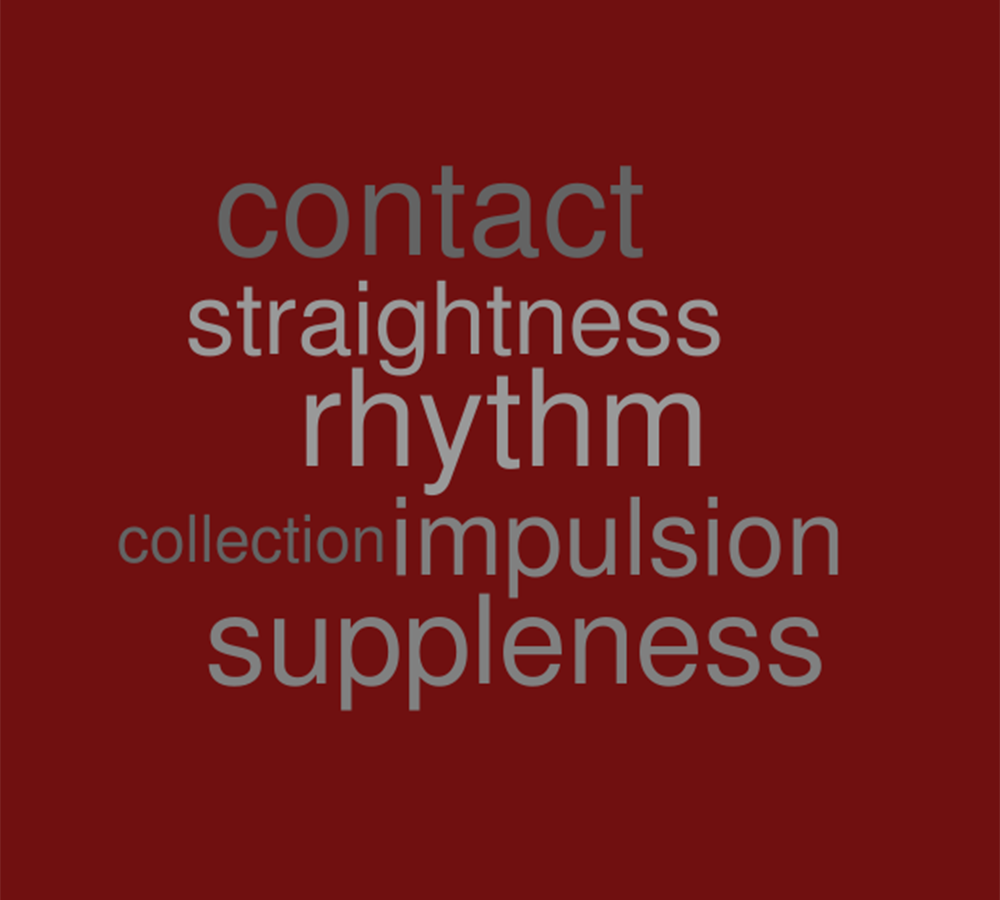The words from the Training Program are seemingly very simple to understand. They are words we are familiar with, that we use in everyday life. However, the truth is that their meaning in dressage is more complicated than you first think.
There has been very little change to the Training Program – or Training Scale – for decades. If you have an interest in dressage – whether as a rider, trainer, coach or commentator – no doubt you will have heard these words being used. And although we hear them often, it can take a long time to develop a good appreciation and understanding of them and the concepts behind them.
Another complication we encounter with the words of the Training Scale is that they are translated from the German language. German has words that are very specific to dressage and we just don’t have a direct translation in English. So, it’s important we look at these words closely. Otherwise, as riders and trainers discussing our training with each other, we may be using the same words, but how can we be sure we are speaking the same language?
If you are someone who is at all serious about their riding, the official instruction handbook of the German National Equestrian Federation, The Principles of Riding, is a must-have book. Interestingly, in my edition (2001) at least, there is no mention of “The Training Scale”; it’s referred to as “The Training Program”. I consider this book the dressage bible and it outlines the German training system. It is a great starting point to understanding the language of dressage.
If you study the “elements” of the Training Program, you will start becoming familiar not just with their dressage meaning, but also how they fit within the German training system. The words start to represent “concepts”. As soon as you get a basic idea of the six elements, you are in a good position to start practising the language of dressage! Start with your own horse. Try to break down what’s going on in your training, being careful to categorise both the good work, or problems, using words from the Training Program.
Try to avoid slipping out of the language. For instance, I often hear riders say, “my horse won’t let go of the left rein”. To solve the problem, we have to categorise it correctly. What the rider is feeling in their left hand is a symptom rather than the problem. If we categorise it as a problem with “Straightness” and explore that concept, then we discover there are training solutions.

ANSWERS ALWAYS THERE
It seems like a little thing, but by categorising the problem this way you are always taken back to the Training Program and the answers will be there. If you are speaking to your coach and trying to explain the problems that you’ve encountered, do it using the words from the Training Program. It is an opportunity to practise using the correct language and improve your understanding of the system.
When you are at a competition and watching a horse do a test, think about how they are going in relation to the Training Program. Describe to yourself what you are seeing and practise the language of dressage.
The more you are able to define what you are seeing and what you are feeling in the language of dressage, the easier it becomes to understand the system. If you feel you have an issue that is unique and falls outside the elements of the Training Program… you need to look at it again!
This isn’t to say that great coaches won’t come up with expressions and analogies that are very helpful. Sometimes a great coach will say something quite left-field to make you think. But so often it still comes down to just a better understanding of that “language” and those concepts and how they fit together.
Knowledge acquired from a book alone isn’t going to make you a great trainer, however, it will give you a head start. Often the reason we start riding has nothing to do with books or theory. We love horses and riding, but if you want to become a good dressage rider, at some stage you are going to need to speak the lingo. The quality of the horse is of course important. The talent of the rider is important. The knowledge of the system is paramount. A good rider may have a good position, good balance, good feel, and is able to influence a horse however they wish. A good trainer has all of this but also the knowledge and experience in how to influence the horse and stay progressive in its training.

RHYTHM vs ‘TAKT’
So, let’s explore an element from the Training Program; let’s start with “Rhythm”. Okay, so that seems like a quite simple word. We’ll start with the definition of rhythm from Google: A strong regular repeated pattern of movement or sound. So, with this simple definition of rhythm, we could in fact have a lame horse, as long as its lameness is a regular and repeated pattern it can work in rhythm!
Part of the problem we have with the word “rhythm” is that it is the closest translation of the German word “takt”. I say closest, because they are not exactly the same. Takt addresses the problem we have with rhythm, by meaning purity of the natural gait. Takt is a desirable, naturally occurring trait in a horse. That is, it can have three distinct quality paces. For example, a horse with takt will have a clear and correct four-beat walk and so on with trot and canter.
The FEI definition of rhythm is as follows:
Rhythm – The Regularity and Tempo
The first step of the training scale that should be established is the rhythm. The regularity is the correct sequence of the footfall, and the tempo is the speed of the rhythm. The rhythm is the regularity of the beat in all paces. Steps and strides in each variation of the pace should cover equal distances and also be of equal duration remaining in a consistent tempo. The rhythm should also be maintained through the transitions within a pace and in all turns, also in the corners, as well as on straight lines. No exercise can be good if the horse is losing rhythm. A loss of rhythm is often a sign of incorrect training. In order to judge the correctness of the rhythm, the judge must know how the horse moves in the basic paces.
As you can see, it’s a very good but quite lengthy explanation for one word. The last sentence referring to a knowledge of the basic paces is important.
To have a good understanding of rhythm/takt in training, we must consider the following: tempo, the length of stride, and the speed the horse travels. These three variables are very important training tools for every dressage rider. They are tools we can use because we have the power to influence them. We must be aware of them. One example of how to think about this might be a horse that is “running”. In this instance, the tempo is too quick, the length of stride unchanged, and the speed of the horse is too fast.
An experienced trainer will have a very acute awareness of rhythm/takt. They are able to help the horse to find its “sweet spot” and organise the variables with precision. To a good trainer, finding a horse’s natural rhythm/takt is second nature.
It’s important to remember at this stage that takt is a naturally occurring trait; the purity of the pace and the rhythm and regularity of the horse is something it poses naturally to a greater or lesser degree.
It’s something the horse already has and as such, with good riding, it can be maintained and developed. On the other hand, if mistakes are made, it’s something we can also lose. In this way, a loss of rhythm can indicate problems in the training. Although we may try to isolate rhythm as an element, the truth is it doesn’t exist totally on its own. Even in a young horse, all the other elements of the Training Program are present, but not in an established or consistent way.

“A Freestyle can also be a great
example of correct rhythm/takt.”
THE METRONOME EXERCISE
If you would like to do a little exercise to improve your awareness of rhythm next time you ride, try this: download one of the many metronome apps onto your phone. You should be able to vary the tempo of the beat on your phone to find a tempo that suits your horse at trot. Once you have found a tempo that suits your horse, simply ride around and do your best to maintain that rhythm. It’s not easy!
Another great example of just how difficult it is to maintain a rhythm is to watch a Freestyle test. Even the very best riders will sometimes struggle to maintain their rhythm in sync with their chosen music. All it takes is a little bit of tension, or the horse is more or less energetic, to be out of sync. A Freestyle can also be a great example of correct rhythm/takt; when a good rider on a well-trained horse is absolutely in sync with their music, it is magic!
So, good luck with learning your new language! EQ
Next time in Equestrian Life Magazine, let’s explore another simple word with a complex definition: “Straightness”.
YOU MIGHT ALSO LIKE TO READ:
Improving the Half Pass – Equestrian Life, May 2022
The Literate Horse Rider – Equestrian Life, June 2020


